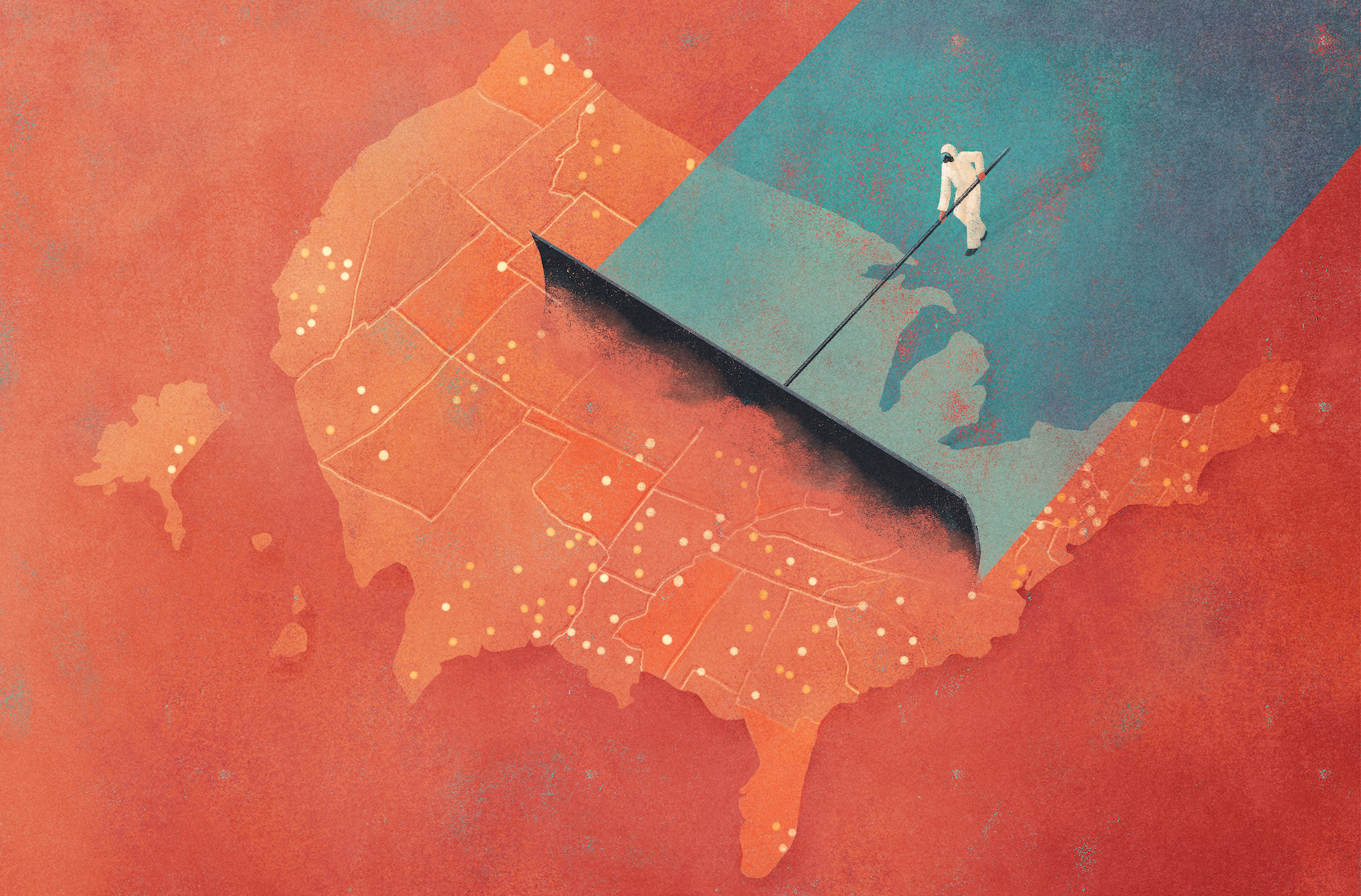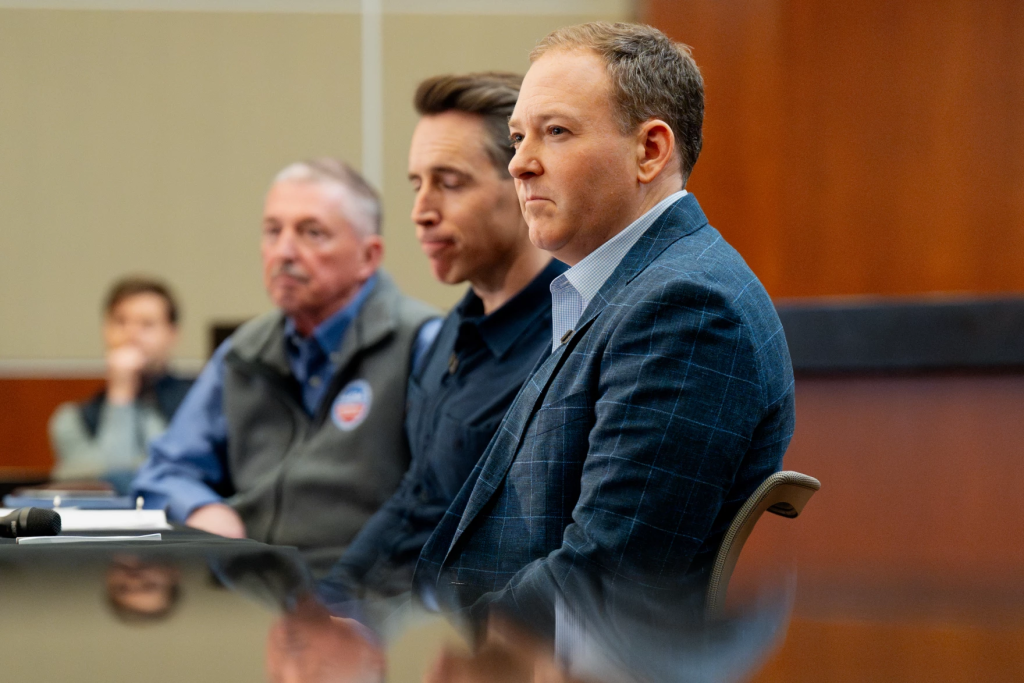EPA Moves To Accelerate Superfund Cleanup Amid Cuts
The agency plans to expedite the process of cleaning up toxic waste sites, even as Trump aims to slash its budget and staff.

Illustration by Alicia Perkins.
Since January, the Trump administration has made sweeping cuts to science and research at federal agencies, slashing funding, laying off workers and terminating grants. A minority staff report from the Senate Health, Education, Labor and Pensions Committee released in May called the administration’s actions a “war on science.”
But amid these cuts, the administration plans to prioritize an environmental program that cleans up toxic waste dumps, also known as Superfund sites.
There are 1,340 Superfund sites in the US. They’re in nearly every state, and many are located near residential areas. An estimated 78 million people—almost a quarter of Americans—live within three miles of a Superfund site.
These sites are some of the most polluted places in the country and often contain highly toxic and cancer-causing materials, such as cyanide, arsenic, dioxin, and asbestos. Some Superfund sites were once home to industrial manufacturing plants, while others are the result of mining operations and military activities.
The Environmental Protection Agency (EPA) has overseen the Superfund program since its creation in 1980 and follows a systematic, science-based process for cleaning up these toxic waste sites. The process can take years, even decades. But under the second Trump administration, EPA Administrator Lee Zeldin has signalled the agency plans to accelerate Superfund cleanups.
“Each Superfund site has its own unique circumstances and challenges, but the overall posture of the Trump EPA is that we want to expedite every timeline possible,” Zeldin said in an email to Bloomberg Law in May.
Some environmental lawyers say the administration is emphasizing toxic waste cleanup because these projects have tangible results and are often popular with voters.
“ Cleaning up contaminated sites provides photo-op ready wins,” says Nicole Weinstein, a principal who specializes in Superfund litigation at Beveridge & Diamond in New York City. “Digging up dirty dirt or placing a cap on a contaminated site is visible, easy to understand, and important to communities.”
Superfund cleanups are also focused on past actions, rather than imposing new regulations on businesses, which can be politically risky.
“ Everybody wants to be safe from hazardous chemicals,” says Ben Gibson, counsel at Latham & Watkins in San Diego, California. “There are major partisan disagreements about things like climate change or the scope of permitting requirements. But with Superfund, we actually have a common goal as a country of cleaning up sites that are endangering human health or the environment.”
Some U.S. lawmakers, however, have expressed concerns that mass layoffs within the EPA and a dramatically reduced budget will hinder the agency’s ability to accelerate Superfund cleanups. The Trump administration has proposed cutting the EPA’s overall budget by more than half—from $9.1 billion to $4.2 billion—and eliminating nearly 1,300 jobs. The Superfund program would see a $254 million cut in funding, under the administration’s budget proposal.
“When budgets are cut, work slows down,” Sen. Sheldon Whitehouse (D-RI) said at a Senate hearing in April. “The winners from slashing EPA’s budget and staffing and kneecapping the Superfund program are the planet’s biggest polluters.”
The Trump administration has justified Superfund budget cuts by highlighting taxes on the chemical industry that help finance the program. The Superfund program also received $3.5 billion in funding through the Bipartisan Infrastructure Law under the Biden administration.
Since his confirmation in January, EPA Administrator Lee Zeldin has visited several Superfund sites, including the West Lake Landfill in Bridgeton, Missouri. The landfill, which sits between St. Louis Lambert International Airport and the Missouri River, contains thousands of cubic yards of radioactive waste.
The radioactive waste buried in the landfill is a remnant of the Manhattan Project, a top-secret government effort to develop atomic weapons during World War II. In the 1940s, workers in St. Louis processed 50,000 tons of uranium, which was used in some of the nation’s first atomic weapons tests. Hundreds of thousands of tons of radioactive waste were later dumped across the St. Louis region, including in the West Lake Landfill.
During his visit to St. Louis in March, Zeldin met with community members who have been sickened by the contamination.
“As somebody who doesn’t live here in this community, and I’m here for the first time hearing these stories from the people who lived here, to hear this multi-generationally where people are talking about their grandkids, this is something that should have been addressed a very long time ago,” Zeldin said.

Cleanup of the landfill, which was designated a Superfund site in 1990, was originally set to begin in 2029. But at Zeldin’s request, EPA staffers put together a revised timeline, which bumps the project start date up to 2027.
When asked whether budget and personnel cuts at the EPA will affect the agency’s ability to clean up the radioactive waste, Zeldin said he doesn’t expect staffing to be an issue. The agency, he said, plans to pivot away from studying Superfund sites and instead focus on cleanup efforts.
“There are billions of dollars that we’ve now been able to free up,” he said. “My goal is that if a dollar is spent, that the dollar is spent on directly remediating the environmental issue. I do not want to see a dollar spent to some group to tell us that we have an issue that needs to get dealt with.”
But environmental lawyers say research is an integral part of the Superfund cleanup process.
“It’s critical to study each site and understand the pathways of contamination, the way that contaminants interact with our environment, with people. They all differ and you have to look at the specific site,” says environmental lawyer Nicole Weinstein. If you make assumptions about a site, you can end up with an expensive remedy that’s ultimately ineffective, she says.
In St. Louis, activists who have waited years for the radioactive waste to be removed are cautiously optimistic. Longtime resident Karen Nickel has been fighting to get the Superfund site cleaned up for more than a decade and met Zeldin during his trip to St. Louis.
“One of the most important things he did when he came in, is he put the hammer down,” Nickel says. “What we saw in that meeting was pretty powerful and impactful. There’s just that little bit of movement, and when you have that, it does give this community hope.”
After reviewing the revised timeline with fellow St. Louis activist Dawn Chapman, Nickel says she believes it’s an achievable goal. But, she adds, even after the radioactive contamination is removed, its legacy will be felt for generations.
“This will never end for us,” she says. “We don’t get to just wipe away the devastation that we have seen in our community with these illnesses. … Worrying about our own children and our grandchildren and their children is going to be a lifelong battle.”
This story was also produced for the Science Friday podcast by Shahla Farzan with additional production help from St. Louis Public Radio reporter Jason Rosenbaum. Special thanks to the experts we spoke with: Nicole Weinstein, Ben Gibson, Kelly Richardson, and St. Louis activists Dawn Chapman and Karen Nickel.
Shahla Farzan is a science journalist, PhD ecologist, and editor with American Public Media, where she helps produce science podcasts for kids. She loves showcasing the many weird and wonderful aspects of science—and encouraging young, curious thinkers to question and explore the world around them.